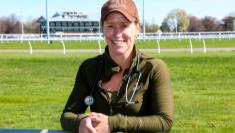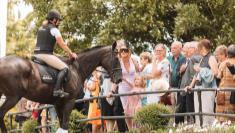
A history lesson ahead of Cambridge JC’s historic day
May 19, 2021 will be a milestone day for both the Cambridge Jockey Club and the New Zealand racing industry.
That is when the Cambridge club will host New Zealand’s first totalisator meeting on a synthetic track. It will also be the first occasion the club has staged a meeting on its own course.
Though the Cambridge Jockey Club is based in the heart of New Zealand’s thoroughbred breeding industry, it is one of New Zealand’s youngest racing clubs.
Most New Zealand racing clubs were established before 1900 but Cambridge did not come into existence till 1944 and was originally known as the Cambridge Picnic Racing Club.
Its first “sports” meeting was held at Pukekura, in July 1944, and the following year the club held an equalisator meeting at the Cambridge Trotting Club’s course, with six galloping races and two harness races.
The equalisator meetings, with a mix of thoroughbred and harness races, continued till Cambridge was granted a totalisator permit in 1951.
The NZ Racing Conference also requested that the club mark the change in status with a change of name and the Cambridge Picnic Racing Club morphed into the Cambridge Jockey Club, a name considered more in keeping with its elevation to the ranks of totalisator clubs.
The club’s first totalisator meeting was held in May 1951 and the turnover was 70,000 pounds, which, when inflation indexed, would be the equivalent of $4.6 million today.
The race meetings continued to be held at the harness club’s track till 1960, when the Jockey Club shifted its meeting to Te Rapa, as the harness club was looking to remodel its track and concentrate on night meetings.
The galloping club was allocated a second race day in 1968 and for a time had four race days but in recent years has held two meetings a season at Te Rapa.
The Cambridge Jockey Club also recognised the growing demand for training facilities in the district and paid 12,500 pounds in November 1960 for a 50-acre property in Hannon Road.
The initial training tracks were opened in 1962 and another 100 acres, adjacent to the original site, were bought in 1976, at a cost of $225,000, with the NZ Racing Authority providing a loan of $165,000 to develop the training complex.
Cambridge has since developed into Australasia’s busiest training centre. Three of the top five stables on the national trainers’ premiership are based at Cambridge and the centre has produced five of the last seven New Zealand Derby winners.
However, the installation of the Polytrack training and racing track has taken the facilities to another level.
Construction of the synthetic track, which was affected by the Covid-19 lockdown, began in January 2020 and horses were working on the track by late-October, with the first trials meeting in November.
Twelve race meetings are scheduled for the synthetic track – which is 16m wide with a circumference of 1870m - between May 19 and October 13 this year.
The possibility of a synthetic training track at Cambridge had been under discussion for some time but a grant from the Provincial Development Unit acted as a catalyst to extend the plans to cater for racing, as well as training and trialing.
The Provincial Development Unit will also assist with the funding of similar tracks at Riccarton and Awapuni. Construction of the Riccarton track has begun, with the first race meeting scheduled for May 2022.
There will be a maximum starting limit of 12 at the first synthetic meeting at Cambridge and while the straight is not long, the camber from the 800m mark to the top of the straight should allow horses to improve from back in the field.
“They have been able to win from back and from the front at trials,” club CEO Mark Fraser-Campin said.
The quality of synthetic tracks has improved enormously over the last two decades and the tracks are now accepted around the world as suitable surfaces for training and racing.
Meetings on all-weather tracks make up almost 20 percent of the flat fixture list in Britain and the champion mare Enable, a dual Arc de Triomphe winner, used the Group III September Stakes, on the Polytrack surface at Kempton Park, as her final lead-up to each of her three starts in the Arc.
Enable also won her maiden on a synthetic track, and in her first appearance in the September Stakes, in 2018, had to beat another top-class galloper in Crystal Ocean. In the 2019 world racehorse rankings, Enable and Crystal Ocean shared the No 1 ranking, in a three-way tie with Waldgeist.
The All Weather Championships in Britain are staged over a series of meetings at six all-weather tracks and leading trainers John Gosden, Mark Johnston, Charlie Appleby, Andrew Balding and Roger Varian were among those to win more than 20 races during the 2020-21 championships.
We wish the Cambridge Jockey Club all the best with their first raceday on Wednesday 19 May.









